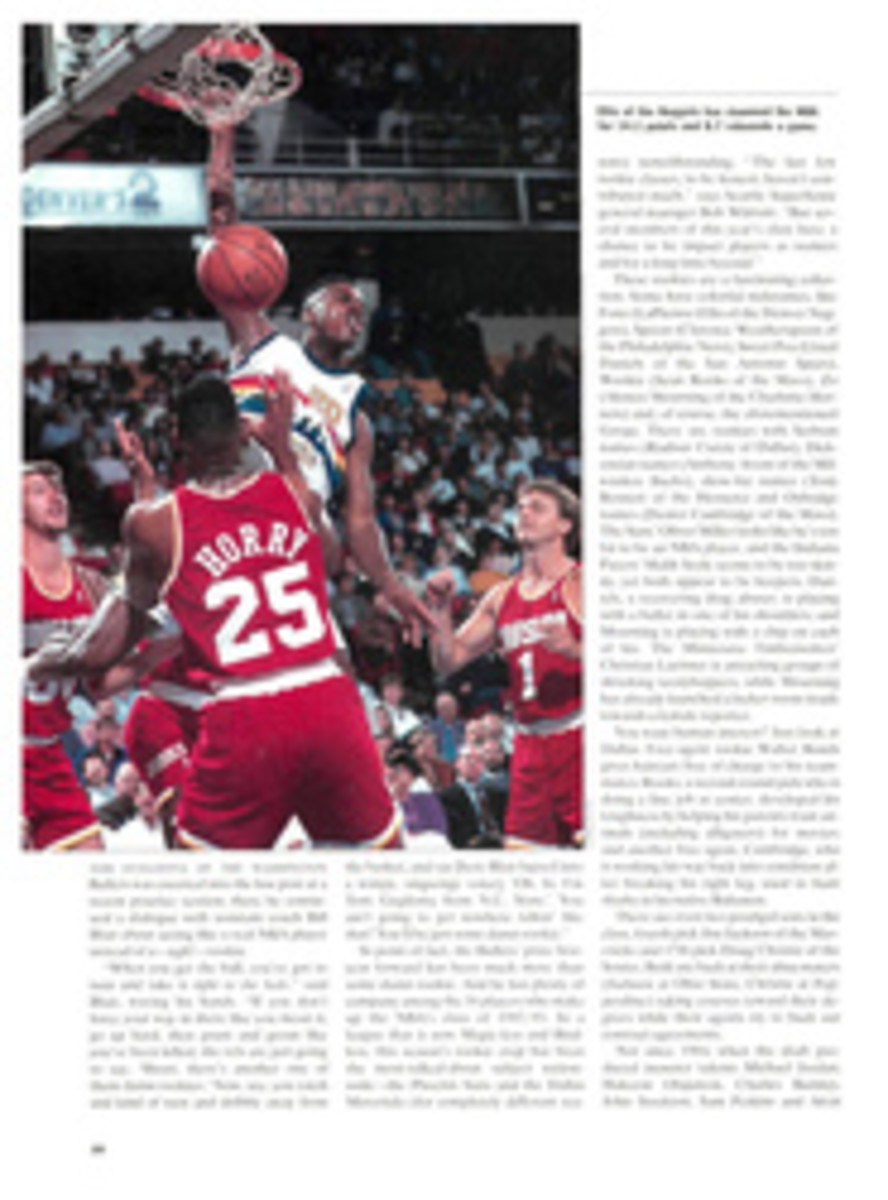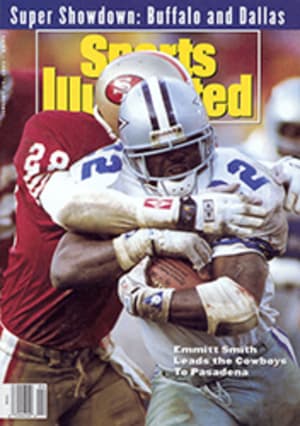
Visionary Exercises The Institute for Sports Vision provides programs to improve athletes' eye performance
DON TEIG IS AN OPTOMETRIST WHO enjoys schmoozing with his patients
as much as he likes treating them. Sitting in his Ridgefield, Conn.,
office, Teig, 47, talks about his own eyes. ''I'm not even close to
needing reading glasses,'' he says, ''and I still have a good outside
shot in basketball.''
Teig's secret isn't just good genes. It's that he constantly
exercises his eyes. ''The eye is an organ controlled by six muscles
that need strengthening and toning,'' he says. ''Stronger eye muscles
mean more than 20-20 vision -- they mean better color and night
vision, depth and distance perception. Since the brain gets its
information from the eyes before issuing orders to the other body
parts, better vision also means improved reactions, coordination and
other athletic skills. It means a better athlete.''
Teig felt so strongly about athletes' eyesight that 14 years ago
he turned his practice into the Institute for Sports Vision. Operated
by Teig, codirector Alan Berman, a third optometrist (who works part
time) and several staffers, the institute uses everything from
standard tests to the latest in high-tech equipment. Its patient
roster is impressive: 11 major league baseball teams, four NBA teams,
two teams each from the NHL and the NFL, the U.S. ski and decathlon
teams and the Senior PGA Tour as well as individual athletes such as
New York Yankee shortstop Randy Velarde and first baseman Kevin Maas,
New York Knick center Patrick Ewing and Boston Celtic forward Xavier
McDaniel.
But any weekend athlete willing to commit up to $1,200 can get 12
weeks of tests and therapy at the institute. All patients get a
two-hour workup that includes tests that measure everything from
depth perception to eye dominance. ''One interesting element is
dynamic acuity, or seeing clearly when motion is involved,'' says
Teig. ''Another is contrast sensitivity, the ability to see fine
detail: a skier spotting moguls or shadows, a golfer reading the
undulations on a green.''
After taking the tests, a patient will usually be sent home with a
prescription for glasses, contacts or goggles, though few pro
athletes get off that easily. In fact many pros are told to report to
Shaun Ratchford, the institute's sports-vision trainer. Using slides,
electronic equipment and even psychology, Ratchford, 32, trains
patients' eyes to focus more efficiently and to mentally visualize
optimum performance.
Last year Ratchford worked with Scott Lipareli, 25, a pro
racquetball player who had been struggling to track 180-mph serves.
''When Scott made his mistakes,'' says Ratchford, ''he was behind the
ball. We call that exo. If you focus behind a moving or stationary
object, you'll probably hit to the opposite field in baseball, be a
back rimmer in basketball and putt long. If you're an eso, you're
ahead of the ball, and you'll pick up early on ground balls and
come up short on your shots and putts.''
''Shaun's like another coach,'' says Lipareli. ''He's made all the
difference, not only physically but mentally. Physically I'm focusing
better near and far. I can literally feel my eye muscles working,
like flexing biceps. Mentally he offered me no false hope, but he
told me that I was a good racquetball player and that the therapy
wouldn't hurt my game.'' After treatment Lipareli's ranking jumped
from 43rd to 20th in a year.
The Yankees' Velarde also saw an improvement in his game. A .223
hitter the first half of last season, he began visiting the institute
regularly after the All-Star break and hit .302 the second half.
Ratchford's drills helped him improve his physical skills in ways
extra batting and fielding practice had not. ''I took home a kind of
revolving record album where you have to put golf tees in the
holes,'' says Velarde. ''Teig told my wife, Jeanie, to see if my head
was moving -- it was. When you start holding your head still,
everything seems to move in slow motion. That's what a lot of sport
is all about.''
Hindsight being 20-20, a sports-vision institute was just about
inevitable. By the late 1970s sports teams were beginning to make
psychologists widely available to their players and were adopting a
scientific approach to nutrition and weight training. One day in
1978 Teig, who had been practicing optometry for eight years and
longed to expand into sports vision, was introduced to then Yankee
catcher Fran Healy. ''We were talking about the importance of vision
in athletic performance,'' Teig recalls. ''Healy mentioned things
like focus and hand-eye coordination, which weren't being tested. I
eventually got together with some electronic engineers and we
developed equipment for testing, and Bausch & Lomb agreed to finance
a trip to spring training in 1980.''
Teig traveled to a number of camps in Florida. ''I worked with
seven teams and came up with some interesting data about eye
dominance,'' he says. ''Teams with cross-dominant players -- guys who
bat left with a dominant right eye or vice versa -- had high batting
averages. The Royals, who hit .286 in 1980, had an incredible 80
percent cross dominance, which is almost four times that of the
general population. A study in Canada reported that the dominant eye
processes information to the brain faster, and that especially
figures to help in baseball. If you're batting left and your right
eye, which is closer to the pitcher, is dominant, you have a natural
advantage.''
Teig had already renamed his office the Institute for Sports
Vision. As it happened, many staffers from Tennis and Golf Digest
magazines in nearby Trumbull were among his patients. One referral
led to another, and the practice began to grow. ''I'm not saying we
haven't had problems,'' says Teig. ''Sometimes the medical
establishment associated with a team would refuse to let us do our
thing. Or the distance to our office created logistic problems.''
One solution was to take the show on the road. A huge van, or
''mobile eye gym,'' brings the institute's equipment to tennis camps,
golf schools and spring training sites. This year the institute hopes
to set up six regional offices, called the Vision Institutes of
America, which will be staffed by optometrists, ophthalmologists and
vision trainers. Clearly Teig has his sights set on success.

